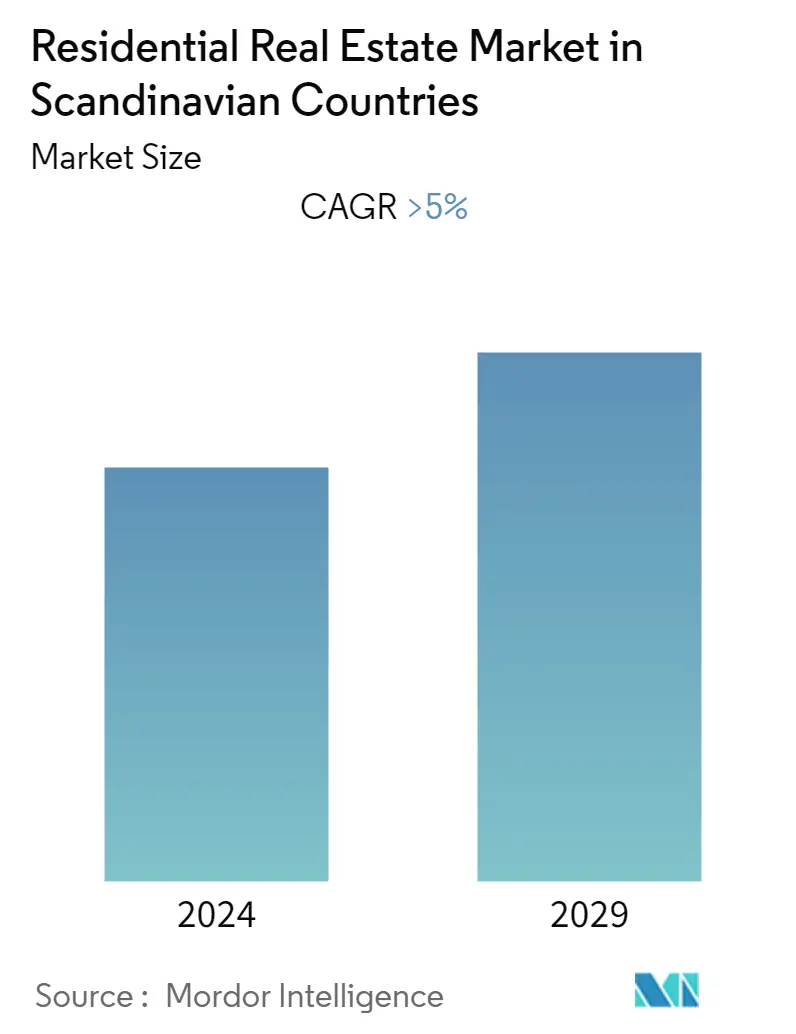Market Size of Residential Real Estate Industry in Scandinavian Countries

| Study Period | 2020 - 2029 |
| Base Year For Estimation | 2023 |
| Forecast Data Period | 2024 - 2029 |
| Historical Data Period | 2020 - 2022 |
| CAGR | > 5.00 % |
| Market Concentration | Low |
Major Players.webp)
*Disclaimer: Major Players sorted in no particular order |
Need a report that reflects how COVID-19 has impacted this market and its growth?
Scandinavian Countries Residential Real Estate Market Analysis
- The Residential Real Estate Market in Scandinavian Countries is expected to grow at a CAGR of more than 5% during the forecast period. The coronavirus (COVID-19) outbreak has had a wide range of impacts on the Scandinavian housing market. As economic activity in the countries has slowed down, consumer confidence in the economy has drastically decreased. The limitations on activity and financial status imposed by the state of emergency influenced banks, real estate brokers, and clients leading to a decline in the home sales and sales timeframes.
- Scandinavian countries are growing rapidly and are projected to be among the fastest-growing region in Europe in the future. Rising house demand has not been matched by construction over a long period due to taxes, regulations, and lack/mismatch of incentives. However, the increase in population and immigration is expected to bring growth in the housing market in countries such as Sweden and Norway.
- The EU bank EIB has signed a SEK 2.5 billion (USD 235.5 Million) loan agreement with the City of Stockholm to support energy-efficient housing. This investment will help provide 1500 new energy-efficient residential housing units in the Swedish capital. The City of Stockholm and surrounding municipalities is home to nearly 25% of Swedes. It is also the largest urban agglomeration in the Nordic region. Increasing the stock of new public rental housing in existing urban areas, like in the capital of Sweden, will improve the social mix in Stockholm, a city that has been growing rapidly. Thereby, building these more than 1500 residential units will promote affordable housing.
- New figures from Statistics Denmark show that construction of 8,703 homes was completed in the 4th quarter 2021, when adjusted for season, which is a decrease of 4% compared to the previous quarter. This brings the total number of completed residential buildings to 34,897 in 2021. The slightly more subdued development in 2021 must be seen in the context of the fact that it has continuously become more expensive to build new homes throughout the year 2021.
- Currently, Denmark's strategy for sustainable construction is based around a voluntary standard, but it enters a new phase in 2023. With this strategy, Denmark is the first country to introduce embodied carbon limits into building regulations. Taking into account that approximately 11% of global CO2 emissions result from manufacturing building materials, this is a crucial step for decarbonising the built environment.
